A Disturbing Truth is Revealed from Staggeringly Low Water Levels of Lake Mead
On the surface, lake mead is a place of pristine beauty and a testament to human ingenuity and engineering. However, in recent years, due to ongoing drought, the lake has had a startlingly low watermark.
Worse still is the fact that the plummeting water levels have wretched up a series of disturbing horrors from the lake’s depth—the details of which are not for the faint of heart.
When The Waters Were At Their Highest
Visitors to the lake will immediately notice the drop in water over time with their naked eyes. The massive reservoir can hold more than nine trillion gallons of water. The minerals left behind on the rocks by the water show how high the water was just a few decades ago.
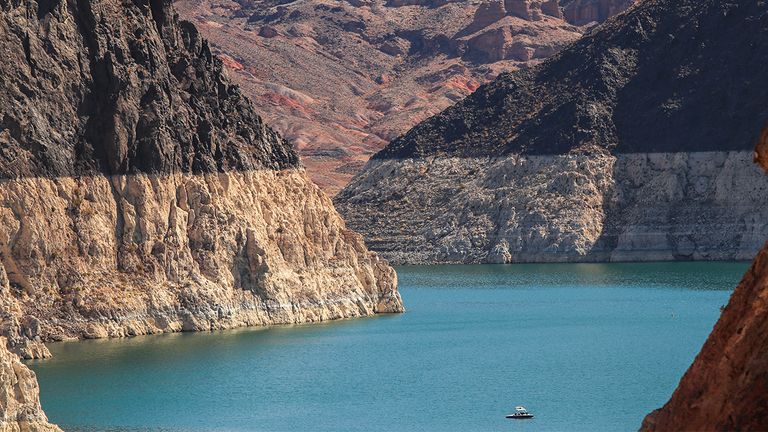
Source: Allen J. Schaben/Los Angeles Times via Getty Images
They were at their highest in the late 90s. You can see where they peaked from the color contrast. The water loss has been more than just dramatic—it has been historic.
Dire Times For The Lake
The water levels are now lower than 1,075 feet. In the 2000s, the water declined slowly. In the following decade, the watermarks became wider and wider. Today they are at their lowest levels. These levels would be bad enough—but considering the trend—this is simply a disaster.
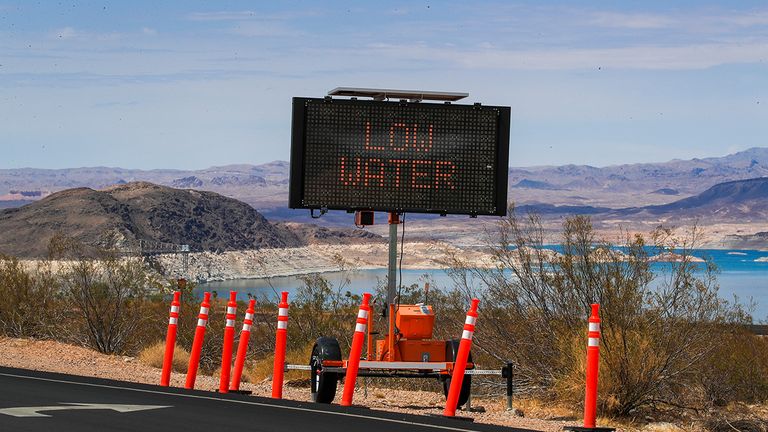
Source: Allen J. Schaben/Los Angeles Times via Getty Images
This low watermark isn’t just a bad measurement of the lake’s health—it’s a possible sign of things to come for humanity, too. But as if that wasn’t bad enough—there’s more to come.
Dredging Up The Past
Dark secrets had always dwelled at the lake’s deepest fathoms. But the prosperously high water levels kept these nightmares from the waking eye. The high water line obscured long-forgotten sins. But all that lake water suddenly began to boil away.
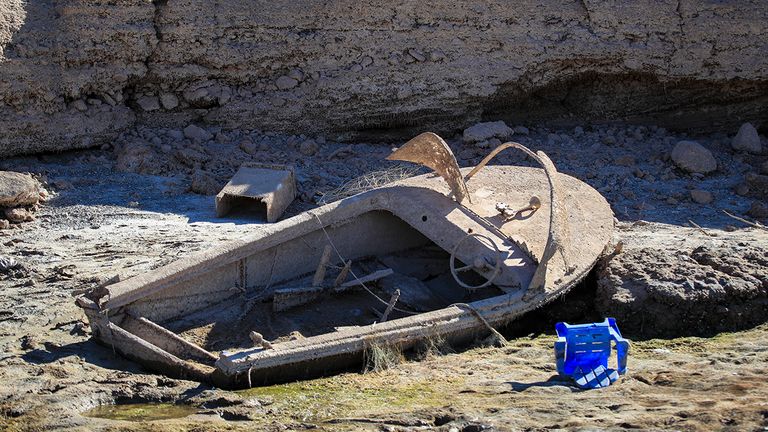
Source: Allen J. Schaben/Los Angeles Times via Getty Images
As a result, the horrors of the lake truly began resurfacing in the early days of May 2022. Relics of the past at first—then much grizzlier artifacts. Not just sunken ships—although there were plenty of those. Something much darker.
Sleeping Secrets
The find made on May 1 would shock the community, but it would be the first in a long line of such discoveries. Just like the receding water levels, understanding the cause of such a tragedy would first put anyone into shock, then denial.
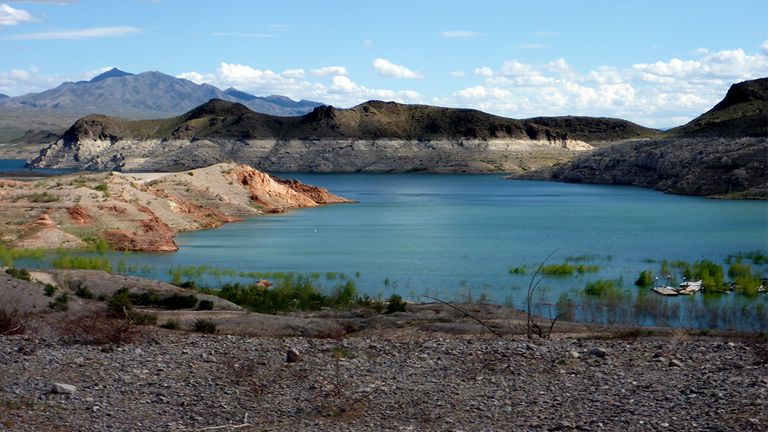
Source: ActiveSteve/Flickr|CC BY-ND 2.0
This first discovery was made possible due to the latest in a string of droughts. But to understand and confront these mysteries, we’ll need to go back to look at the story of Lake Mead itself.
The Lake Had Always Been A Source Of Life
The lake receives its primary inflow from the Colorado River, and it also sends its water back out the same way. Its ability to reserve water is essential to the consistent working of the Colorado River.
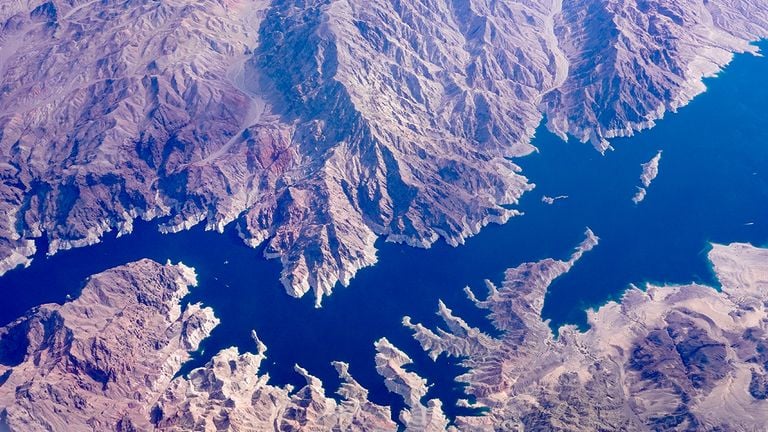
Source: Marli Miller/UCG/Universal Images Group via Getty Images
As such, it is a great provider of life and sustenance to just under 20 million people across the states and even to the people of Mexico. Of course, it is also close to the New Vegas Strip, being around 30 miles away by land.
The Times Before Lake Mead Was Even A Lake
The lake isn’t a natural creation—it was created artificially by American builders and engineers. Its creation was not universally welcomed. In fact, the formation of Lake Mead was highly controversial in its day.
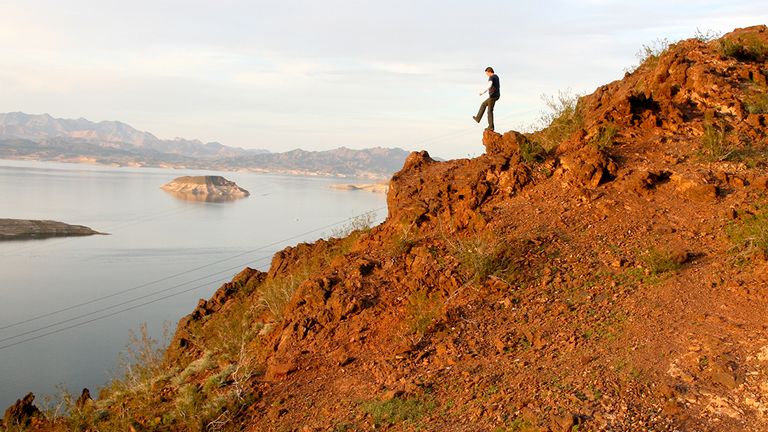
Source: Rain Rannu/Flickr|CC BY 2.0
The area on which the lake rests was once entirely dry land. It had been the home of many indigenous people for many thousands of years—as evidenced by the archeological findings picked up before the water covered the land—as well as late American settlers.
A Place To Hunt And Feed
The area on which Lake Mead now sits was once teaming fresh with game and vegetation. Archeologists explored a nearby cave containing the remains of large animals. Horses, bighorn sheep, ground sloths, and even camel remains were found nearby the lake.

Source: Andrew Cattoir/Wikimedia Commons
Hunters trapped and pursued animals across the plains. There has even been some evidence that basic farming techniques were used in the area. This place had a long history of human contact before being filled in and flooded in the modern age.
A Different Way Of Life, A Different Time
Because Native American history—having been passed down orally generation by generation—has been lost, so we do not know much about how people in the land below Mead lived. What we know is that these people got by through various modes of life.
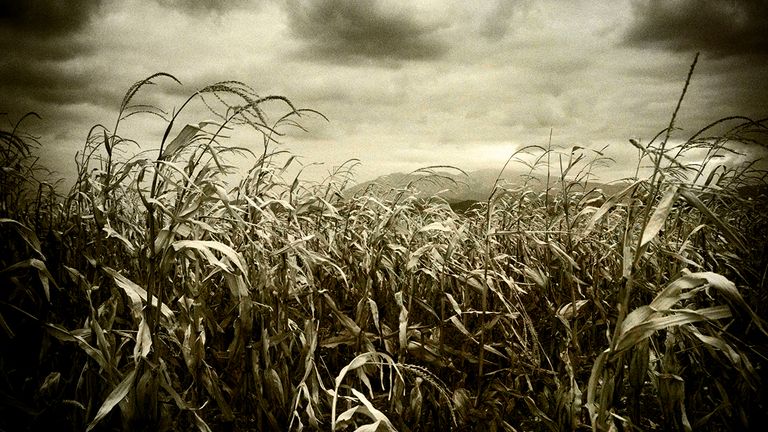
Source: Thanasis Anastasiou/Flickr|CC BY 2.0
Some of the more nomadic groups only traveled through the area, while other groups put down simple constructions and lived there on a more long-term basis. They grew different types of produce: beans, cotton, corn, and squash.
Their Lands Were Plundered
The rich histories of the people who roamed this now-sunken landscape have been forgotten, largely because those who carried the stories were put underground, either through disease or by rifle. These European settlers then began laying tracks—not just ones made by a boot.
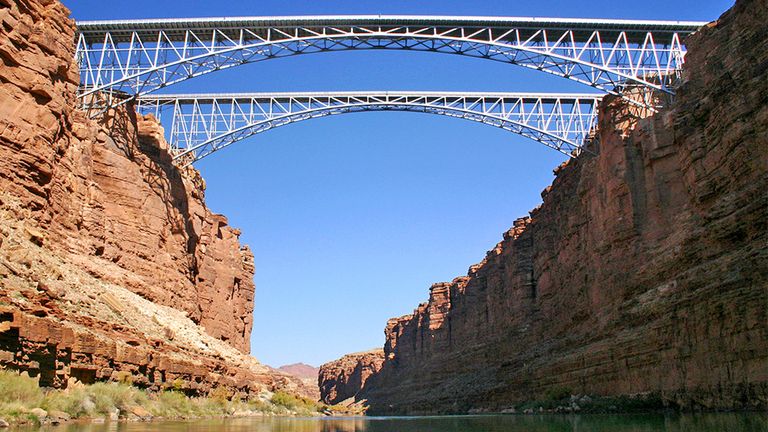
Source: Don Graham/Flickr|CC BY-SA 2.0
With the laying of railway lines came more settlers, then miners, who prized the precious metals deep in the local rock. Their aggressive expansion resulted in a near wipeout of the indigenous community—and their history.
The Building Of The Hoover Dam
The area was changed forever following the construction of the Hoover Dam. The U.S. government estimated that as well as being a fast way to irrigate the surrounding area, the Colorado river could be harnessed to generate an enormous amount of electricity.
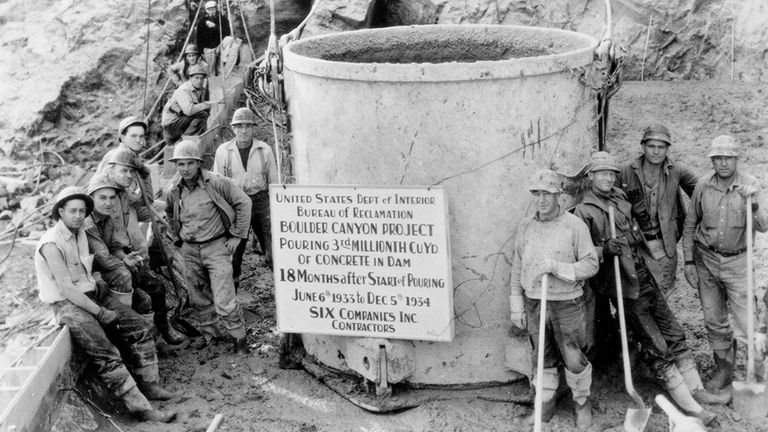
Source: U. S. Bureau of Reclamation/Wikimedia Commons
Work on the Boulder Dam began in 1924 and ended in 1936. The dam, of course, was named after President Hoover. The lake itself was named after Elwood Mead, the Bureau of Reclamation commissioner who signed off on the project.
A Place Of Recreation For American Families
Once again, settlers in the area were forced to move. This time, it was the community of St. Thomas who were forced to evacuate once the water came rushing in. As the water settled, Lake Mead was born. The site became a vacation spot for families across the nation.
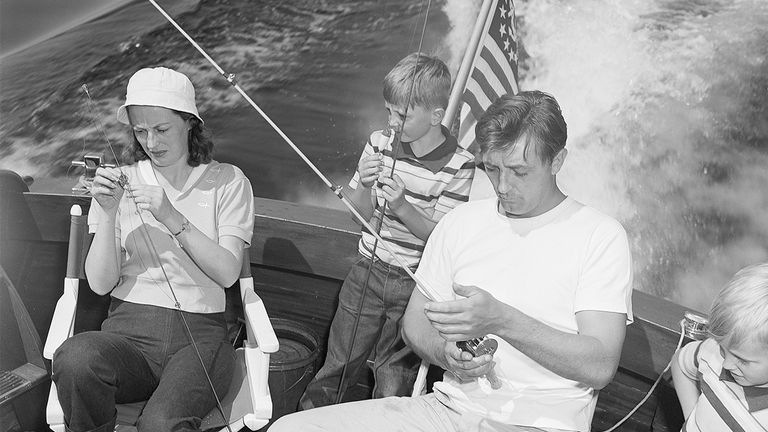
Source: Bettmann/Getty Images
It became a very popular spot for boating, picnics, and sports. The United States government made it official in 1964 by designating Lake Mead as the first national recreation area in the country.
Not All Fun, Games, And Smiles
This fun little spot came at the cost of the indigenous people and their culture, not to mention a town as well. Additionally, the wildlife—the animals, plants, and other important components of the ecosystem—was lost as well. The lake began with the washing away of lives.
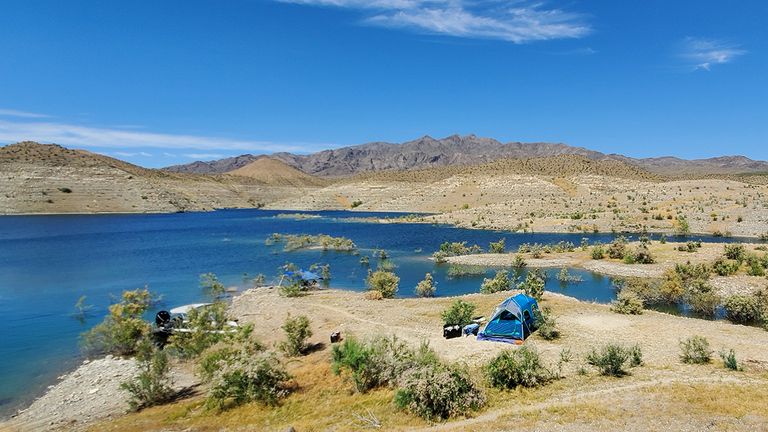
Source: lovz2hike/Flickr|CC BY-SA 2.0
That trend, it seems, continued to the modern day. As the years went by, people began to use the lake as a way to hide their dark sins and secrets—secrets that reemerged as silently as they were hidden.
The Ruined Remains Of St. Thomas
Among the indigenous people’s debris, another ruin litters the landscape by Lake Mead: the settler town of St. Thomas. This town was forced into an evacuation when the dam redirected the water through their homes.
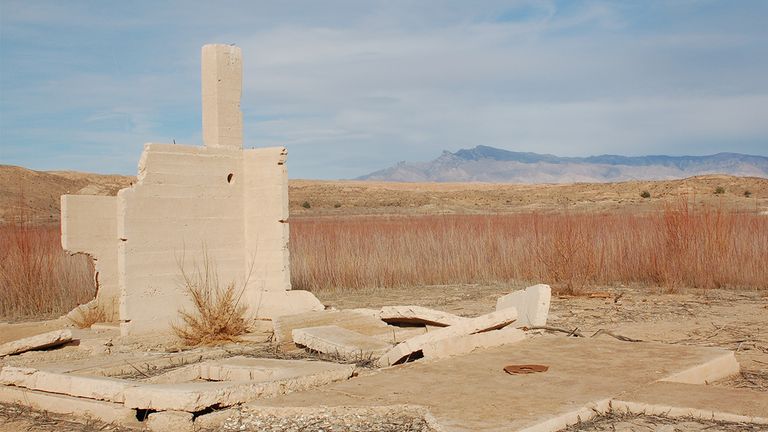
Source: Daniel Jost/Wikimedia Commons|CC BY-SA 4.0
The story of the town was touched upon in the 2018 novel Lords of St. Thomas. Here is the corner of a structure that survived the shock. Parts of the town are drying off now that the lake is beginning to boil away.
What Happened To All The Water?
Lake Mead’s water source can be traced all the way up to the snow on mountain tops, although it is also topped up by distant rainfall. The white chalky rock face painted a natural watermark in mineral residue when the water was at its height.
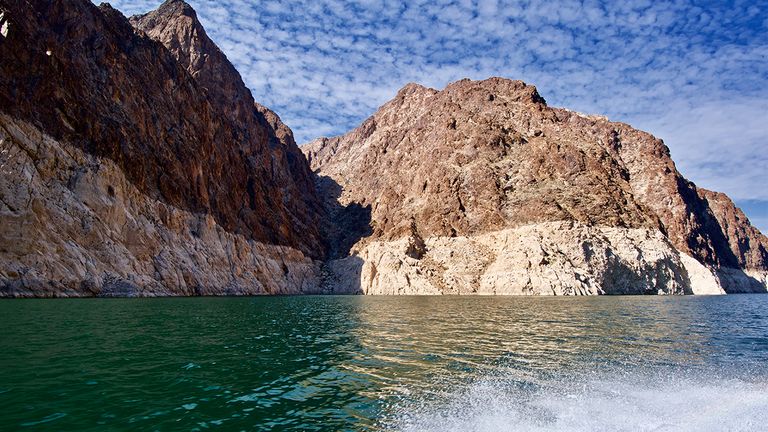
Source: lovz2hike/Flickr|CC BY-SA 2.0
Since then, the levels have been plummeting year after year. This fall has been consistent since the latter half of the 90s. Apart from one year, 2005, in which the water levels rose again slightly.
“Nothing To Worry About”
While the drop in water is undeniable, some people have come up with their own explanation—or rather, ways to ignore the problem. The argument goes that the lake was designed to go up and down. A period of low water will be followed by a period of high water.
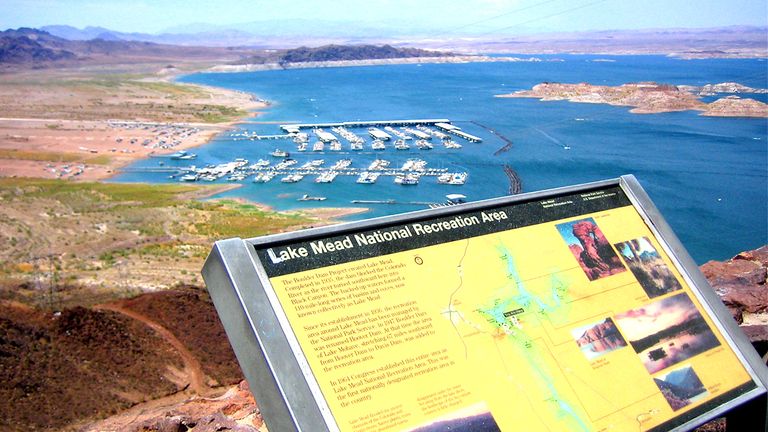
Source: Brian Whitmarsh/Flickr|CC BY 2.0
However, there’s no real indication that this is so. If it were true, there would at least be a scientific consensus on the matter. There happens to be another, albeit worrying, explanation.
Another Sign Of Climate Change
The scientific community has resoundingly concluded that phenomena like the drying up of Lake Mead are the direct result of human-led climate change. Worrying, this wasting away of water is only the start of the problem.
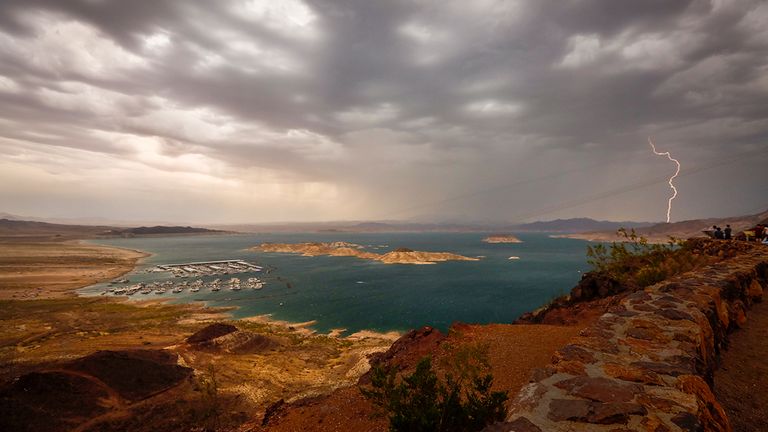
Source: Allen J. Schaben/Los Angeles Times via Getty Images
One part of the explanation can be put on the population density in cities, but for the most part, co2 emissions have caused the planet to warm. As the lake continues to lose water, these human settlements—our cities—will soon begin to decline dramatically.
The Shoreline Keeps Fading
Marinas that formally dotted the edge of the lake have had to close down or settle further down the shore. The Las Vegas ramp was moved as early as 2002, and the official Lake Mead Marina was relocated in 2008. From July 2022 to the start of 2023, water levels had receded by 12 feet.
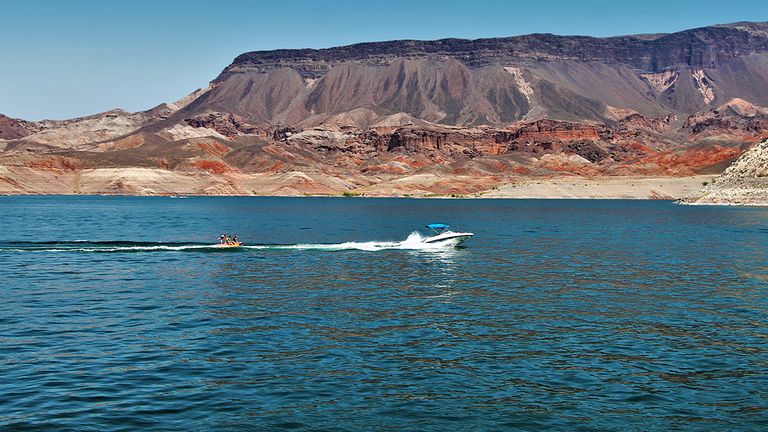
Source: Renee Grayson/Flickr|CC BY 2.0
If this trend continues, by the summer, the lake will have lost 24 feet of water within 12 months. The lake will then be at one-fifth capacity.
…And Those Are The Conservative Estimates
By the end of each passing year, the shoreline grew much further than the original estimate—meaning that the researchers studying the water loss have been conservative with their figures. Worryingly, the problem could turn out worse than anyone currently realizes.
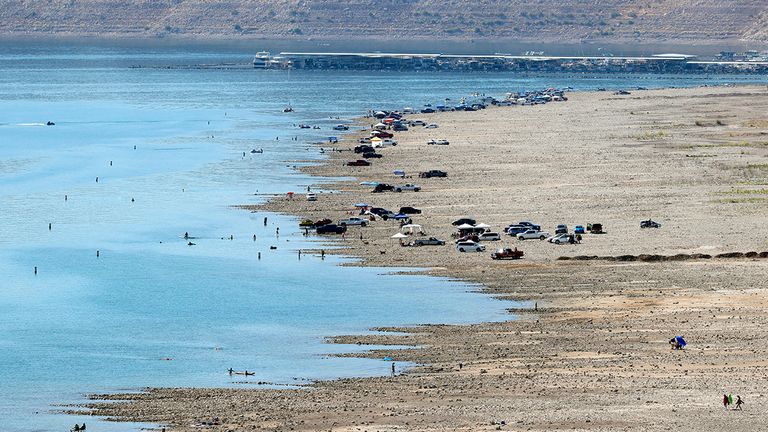
Source: Ethan Miller/Getty Images
The scientific community is working hard on conserving the water of Lake Mead, but there’s no way to know if their efforts will pay off or not, especially since the speed of the problem seems to be accelerating so quickly year on year.
What Goes Underwater Doesn’t Always Stay Underwater
The loss of Lake Mead won’t just be a catastrophe for the local community—it will affect the whole nation. Displaced people will have no choice but to move to other areas. In short, the next decade will be tumultuous if we as a nation do not take steps to mitigate the problem.
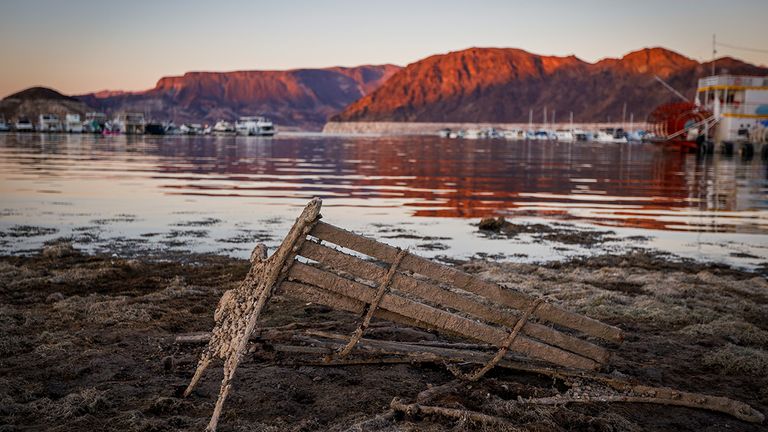
Source: Allen J. Schaben/Los Angeles Times via Getty Images
However, as well as having more abstract, near-future horrors on the horizon, the local communities near Lake Mead have been confronted with horror with a more human face—literally.
A Barrel Of Horrors
This ancient-looking barrel washed up on shore in the summer of 2022, May 1st. A tourist walking around the ever-shrinking shoreline stumbled upon it amongst the rocks. It was rusted up and covered in holes and cracks. They thought it was so large it could fit a person inside.
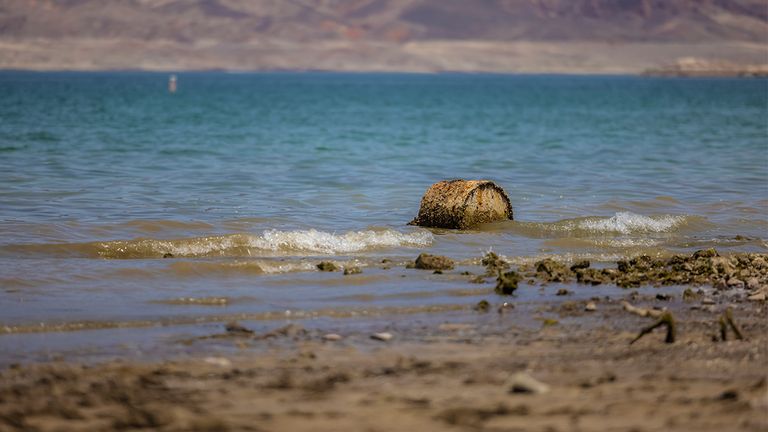
Source: LPETTET/Getty Images
As the tourist got closer to the barrel, they realized that it was large enough to hold a body—in fact, one was waiting for them inside. This person had died long ago.
The Remains At The Bottom Of Lake Mead
It seems that they had been condemned to the bottom of the lake long ago. Naturally, the tourist called the police. But how did this person end up in a barrel at the bottom of Lake Mead? Obviously, there had been foul play.

Source: LPETTET/Getty Images
The police noticed that the victim was wearing very old-looking clothes. They figured that this person had been locked in the barrel and thrown in the lake to rest in their cramped, watery grave sometime in the 80s or 70s.
Opening The Way For More
If this chilling turn of events wasn’t enough, the authorities put out an ominous press statement warning the public that this find would not be the last. Speaking to the press, homicide lieutenant Ray Spencer went on record saying that the low water levels would likely uncover more like this.
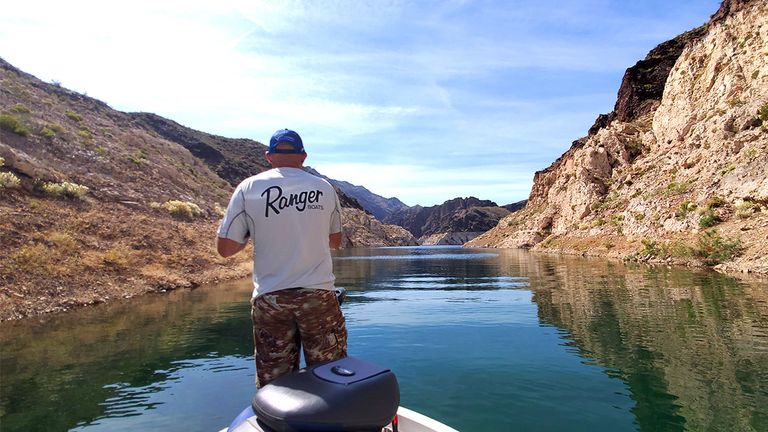
Source: lovz2hike/Flickr|CC BY-SA 2.0
He said to CNN, “we will find more that have been dumped in Lake Mead.” It’s a scary idea that many families could be boating or swimming over such a site of evil deeds.
Almost Like Clockwork, Another Case
Of course, the officer’s hunch, informed by years of experience, proved correct. Another call came within a week of the first. In the early hours of Saturday morning, the National Park Service rangers received a distress call from someone walking around the lake.
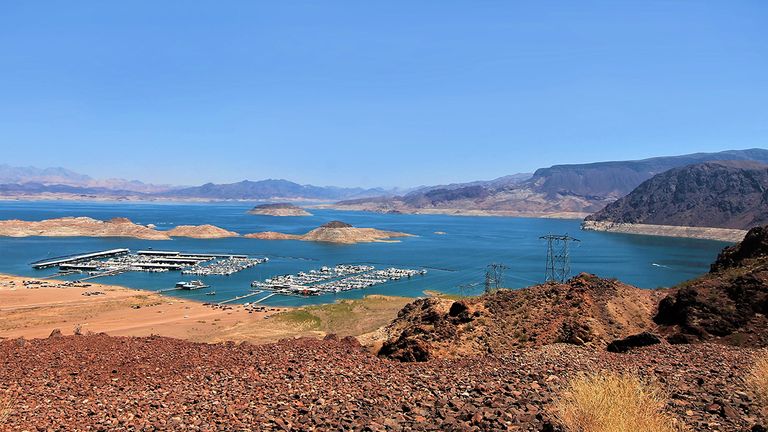
Source: Renee Grayson/Flickr|CC BY 2.0
The panicked caller was requesting help on the shoreline. They had found something deeply disturbing. Without having to hear many details, they already knew what they were dealing with. A dispatch was sent out to investigate.
Another Investigation, Another Grim Sight
Soon, a pack of park rangers was parking up near the water. After taking care of the caller, they went to look at the discovery. This time, it wasn’t a body—it was a collection of human-sized bones which they later verified to be 100% human.
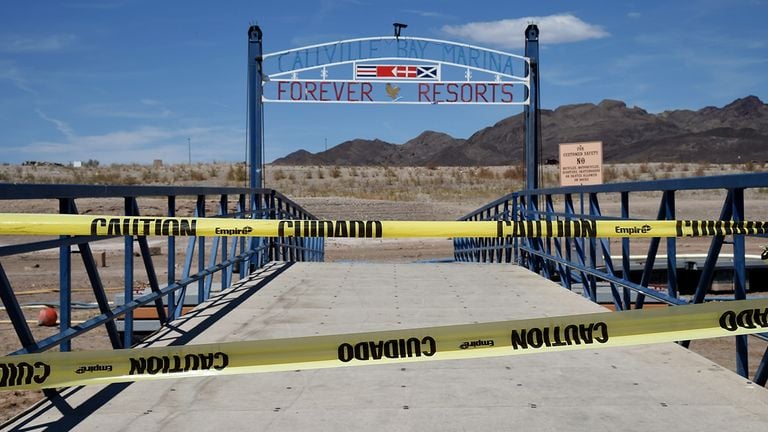
Source: Ethan Miller/Getty Images
Since the remains were so degraded, it was entirely unclear how they had died. It seemed as though they had died long ago. The rangers had no choice but to bring these remains back to the lab, away from the water.
The Two Sisters Who Make The Call
Two people had called the National Park Service rangers that morning. These two sisters, Lindsey Melvin and Lynette Melvin, had been out on Lake Mead on paddle boards, skimming the water’s surface. After an invigorating swim, they floated by a sandbar.
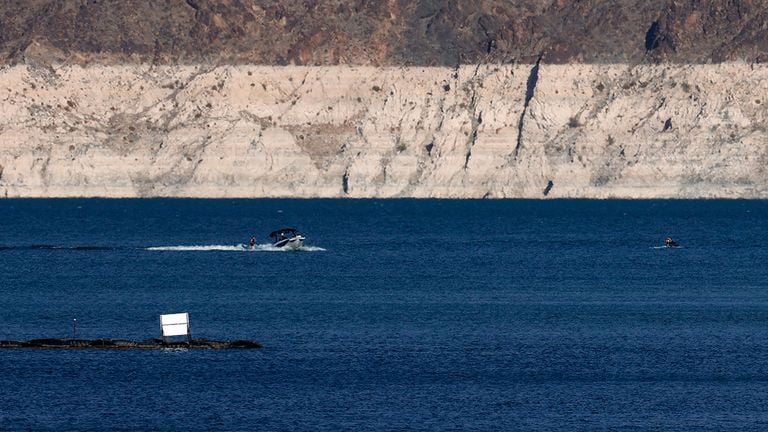
Source: Ethan Miller/Getty Images
Once again, the sandbar had only become visible because of the lake’s historically low water level. They passed by and saw something unusual sticking out of the sand. They quickly realized that they were looking at bones of some kind.
They Thought It Was A Bighorn At First
At first, they simply thought they were looking at the interesting remains of a large animal, a bighorn sheep, perhaps. As they paddled in closer, they soon realized that they were not looking at a wild animal’s bones: this had been a human being.
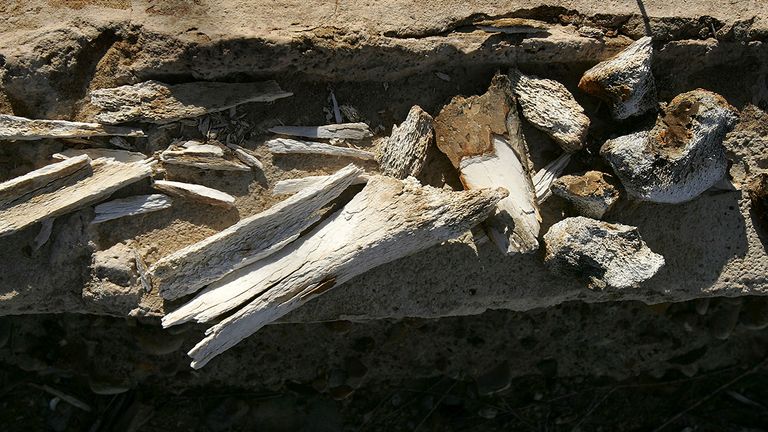
Source: David McNew/Getty Images
It wasn’t easy to tell what they were looking at, given that the remains were half-sunk into the sand. But when one of the sisters saw a jaw with some teeth still attached, they knew that they were looking at something grotesque.
The Sisters Had A Theory
The sisters spoke to several news outlets about their shocking discovery. They told ABC News that they only hoped that the family of the person they found could finally get some answers about their missing relative and that their soul could finally rest.
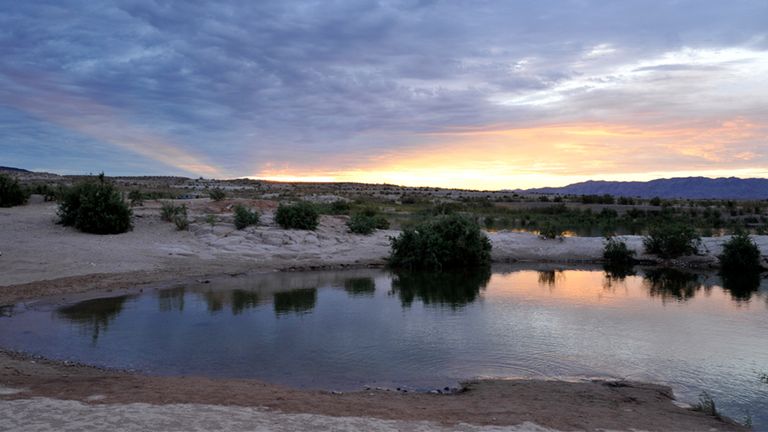
Source: Andrew/Flickr|CC BY-ND 2.0
But that wasn’t all. The sisters had come up with their own explanation as to what had happened to this poor person, condemned to a sandy fate as they were. Intuitively, their theory makes a lot of sense.
The Sisters Believed The Mob Had Been Involved
The sisters were Vegas locals and, as such, had been raised with stories of gangsters. They heard that a mob member would whack someone—perhaps for failure to repay a debt, for speaking out of turn, or for any number of reasons.
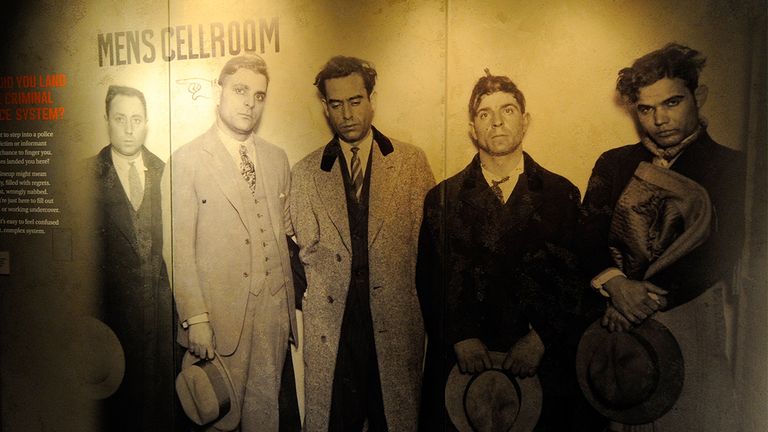
Source: Ethan Miller/Getty Images
According to these stories, they would drive out to Lake Mead and leave them at the bottom of the water. They probably never expected the lake to dry up as it had over the last few decades. This theory would turn out to hold water.
It Had Been Known To Happen, But Not In Nevada
One expert, Geoff Schumacher of the Las Vegas Mob Museum, was about to back up this “Mob connection” theory. He commented that there had “certainly” been people to have “gone missing in this area over the years” and that they could very well have been victims of the Mob.
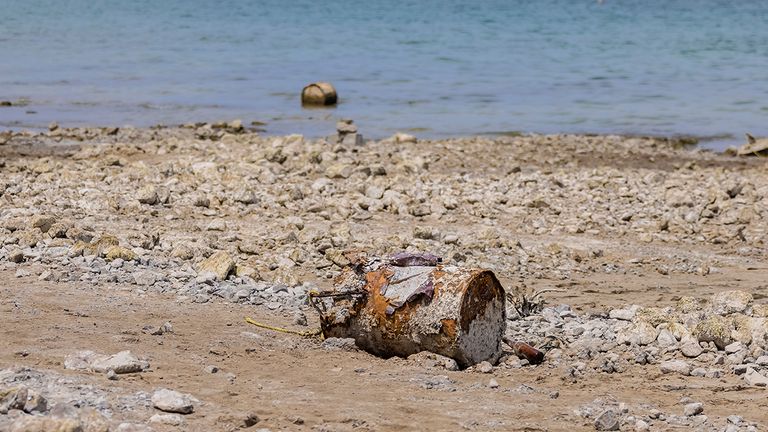
Source: LPETTET/Getty Images
The Mob has been known for rolling people into barrels when they want to get rid of the evidence. However, according to Schumacher, it has never been known to happen in Nevada, especially not in Lake Mead.
Could This Be A Backlog?
Perhaps the Mob has never been found out for using barrels in their dark undertakings. Could this simply be an uncovering of Mob-led barrel coverups? One piece of evidence from the first body points in that direction: the clothes on the body.

Source: Ethan Miller/Getty Images
The clothes seemed fairly old, from around the 70s and 80s, which was when the Mob was most active. It was also the time when they were most openly aggressive. Schumacher said he “would not be surprised” to find out it was the Mob.
A Dark Twist
The authorities were reasonably sure that the barrel had something to do with the Mob. That’s one. As for the other, there was a possible connection—if unusual. A man named Todd Kolod read about the findings in the news. He was shocked. After picking apart some of the details of the story, he knew he had to get involved in the case.
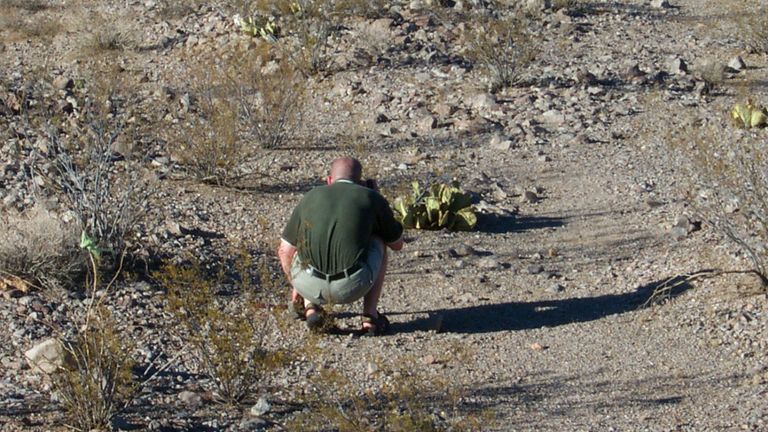
Source: Peter Burka/Flickr|CC BY-SA 2.0
Why? Because the remains found on the sandbar by the two sisters could potentially have belonged to his father.
Making The Connection Known
According to Todd, more than 60 years ago, his father, Daniel, had been out boating on Lake Mead and had fallen into the water. Although they searched, they never found his remains. This might just seem like an accident, but there’s a twist. Daniel was part of the Mob.

Source: Justin Sullivan/Getty Images
Todd had no evidence that the Mob had sunk him, but it seems unlikely that a man would simply fall overboard and never resurface. Not without “outside help.” Although it is possible, it’s doubtful.
More On The Accident
Todd was only a toddler at the time—just three years old—when his father disappeared. But this tale has another quirk: his father hadn’t been fishing out there alone. He had been out on the boat with a friend of his—the only witness. According to this friend, the boat had capsized.
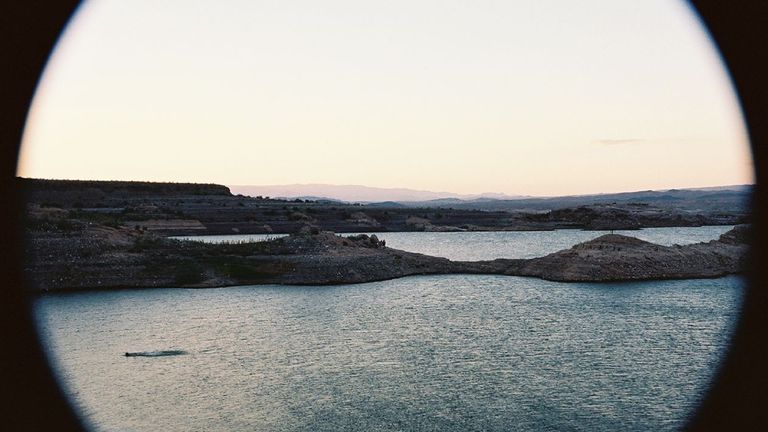
Source: Jeffery DelViscio/Flickr|CC BY-ND 2.0
They were both knocked into the water. The friend was rescued much later, but even after the authorities searched high and low, they simply couldn’t find Todd’s father.
These Cases Weren’t The First Of Their Kind
These aren’t the first remains found in Lake Mead. In 2011, 11 years earlier, a man was found floating near the shore at Callville Bay. This case differed from those found in 2022 in that the authorities found no evidence of foul play.
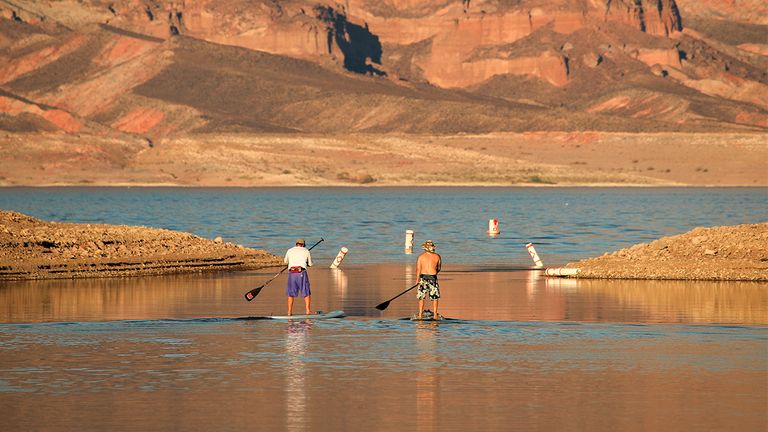
Source: Allen J. Schaben/Los Angeles Times via Getty Images/Getty Images
This time, however, Lake Mead was finally starting to reveal long-hidden secrets. No one is sure what else the lake could reveal as it continues to lose water volume. Only time will tell.
The Gifts Of The Lakebed
Lake Mead proves to have a hand in the darker parts of American history. But the lake had more to share. For example, parts of the lake are bone dry, revealing a bare, cracked lakebed. On this bed lies gifts from the past—long-forgotten artifacts of an era gone by.
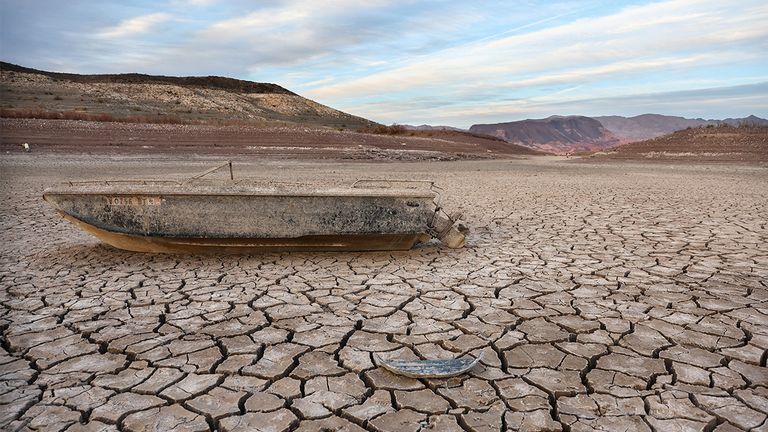
Source: Mario Tama/Getty Images
As well as recently sunken crafts and lost belongings, much older finds are turning up. Some of these items are older than anyone could have ever guessed—as old as the lake itself, in fact!
An Allied Landing Craft
This ancient vessel turned up from its resting place deep at the bottom of the lake. It had been resting around 185 underwater. Since the continuous droughts had boiled the water of the lake away, it found itself sticking out above the surface.
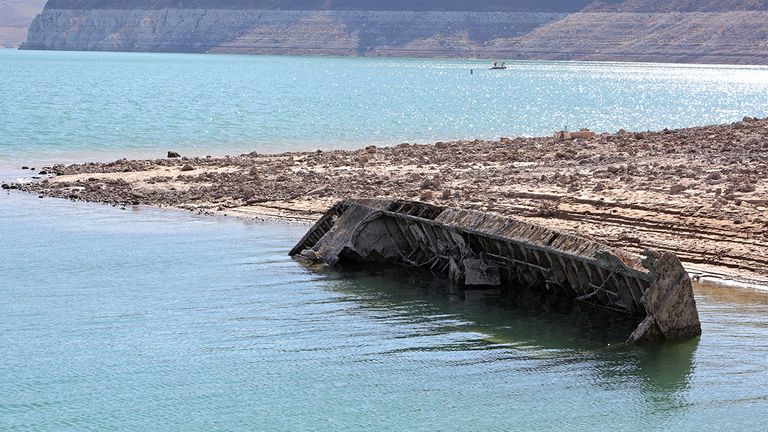
Source: Ethan Miller/Getty Images
This landing craft was of the same kind that had seen action on D-Day on the beaches of Normandy! The question was, what was this kind of vessel doing all the way out in Nevada? Had it been part of a test operation?
It Had Been Designed To Ship Soldiers
The vessel was called a “Higgins landing craft.” Many of these were produced from 1942 to 1945 to help the Allies combat the Axis powers. If this had been a prototype or even just used as a training vessel, it wouldn’t be the first test vehicle to land in the lake.
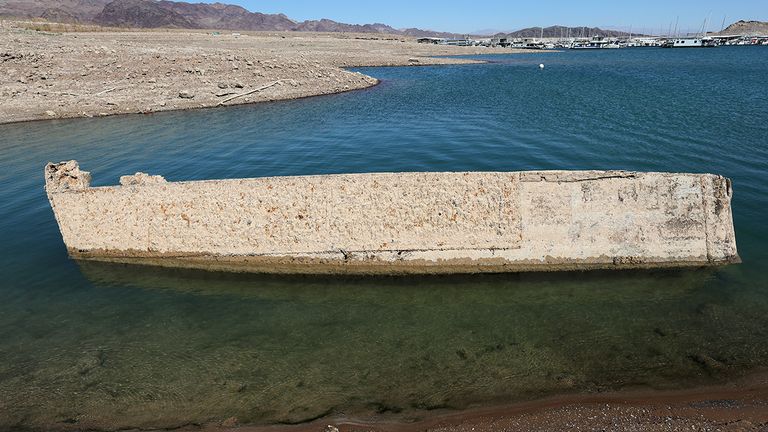
Source: Ethan Miller/Getty Images
A Boeing B-29 “Superfortress” famously crashed into Lake Mead—sometime in 1948—while testing an experimental infrared missile guidance system—and lies at the bottom of the lake to this day. Perhaps one day, that, too, will surface.
The Boat Was On Retirement
As for the Higgins landing craft, it could have seen action in Europe, or it could simply have been shipped out to Nevada. One thing is for sure—it was sent down the Colorado River for a survey mission, but this was long after the conflict had ended.
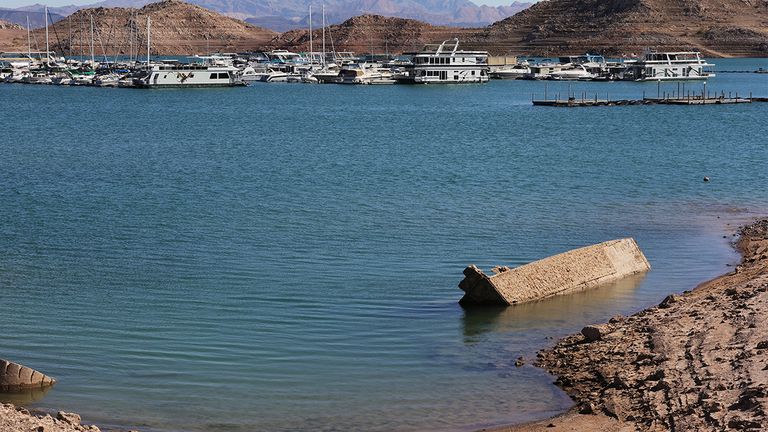
Source: Ethan Miller/Getty Images
After this mission was complete the vehicle was sent to the Lake. At some point later down the line, it sank into the depths, only to resurface some 70 years later, thanks to a changing world climate.
Only A Matter Of Time
Ancient boats, grizzly remains—who knows what else will appear given enough time and enough carbon in the air? If you happen to go to Lake Mead in the future, be wary of dredging up some dark portion of history.

Source: Mario Tama/Getty Images
These artifacts have always been under the lake, but now its fruits are coming to bear. So far, six human remains have been found; hopefully, this is as many as the lake was holding. It is only a matter of time until we find out.
